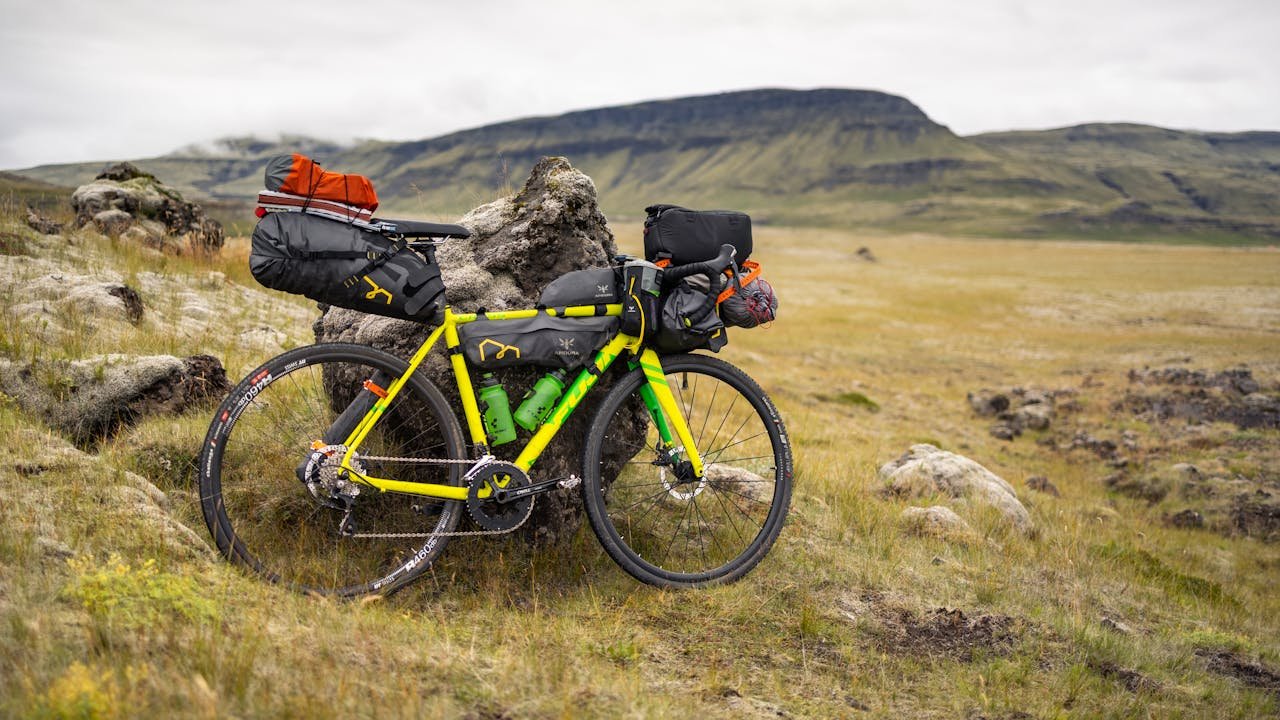Green Travel Tips and Sustainable Guide for 2025
 Green travel tips are essential for anyone who wants to see the world while protecting the planet. Travelers are adopting eco-friendly practices to reduce their carbon footprint and support sustainable destinations.
Green travel tips are essential for anyone who wants to see the world while protecting the planet. Travelers are adopting eco-friendly practices to reduce their carbon footprint and support sustainable destinations.
This guide shows you how to reduce your carbon footprint by making practical and eco-friendly decisions, from transportation and accommodations to packing and eating.
Why Green Travel is Important
Around 8% of global greenhouse gas emissions are attributed to tourism. This is primarily due to air travel, hotel operations and mass consumption. Overtourism can disrupt local communities and harm local ecosystems.
Adopting green travel habits can help:
- Protect natural habitats and wildlife
- Reduce pollution and greenhouse gas emissions.
- Empowering local economies and communities
- Encourage more responsible tourism worldwide.
Travelers can make a difference by making conscious choices to ensure the destinations they love will remain vibrant for future generations.
Green Travel Tips to Make Your Trip More Sustainable

Use the green travel tips below to plan your trip more environmentally friendly. They are categorized according to key travel phases.
Green Transportation Choices
1. Select Direct Flights and Fly Economy
- Direct flights reduce emissions by reducing the number of takeoffs and landings.
- By using the flying economy, you can also reduce your carbon footprint as there are more passengers who share emissions.
2. Reduce Your Carbon Emissions
Use certified platforms such as:
- Gold Standard
- Cool Effect
- MyClimate
You can use these services to offset your travel emissions by supporting clean energy projects or reforestation.
3. Use the Train or Bus Whenever Possible
- Trains emit 90% less CO2 compared to planes.
- Trains are more scenic and faster in many areas.
4. Take the Bus, Walk, Bike, or Use Public Transport
- If you’re in a city, consider using public transportation, such as buses or subways, to get around.
- Tourists can now take advantage of bike-share and e-scooter services in many destinations.
Green Accommodations and Where to Stay

1. Book Eco-Certified Hotels or Guesthouses
You can look for certifications from third parties such as:
- Green Key
- LEED
- EarthCheck
- GSTC-recognized property
These accommodations are designed to reduce waste, conserve electricity, and help local communities.
2. Choose Eco-Lodges or Local Homestays
- Renewable energy is often used to power vehicles.
- Local, sustainable materials are used to build the building.
- Reinvest profits in the community.
3. Be an Eco-Friendly Guest
- Reuse towels and linens.
- When not in use, turn off the TV, AC, and lights.
- Bring your own toiletries and avoid single-use plastic
Green Travel Packing Tips
1. Pack Light
- Weighing less = less fuel consumed on flights and transport
- Select versatile clothing to reduce luggage.
2. Bring Reusables
Avoid waste by packing:
- Refillable water bottles
- Reusable shopping bags
- Bamboo or metal straws
- Reusable containers and utensils
3. Select Sustainable Travel Gear
- Shop for brands that recycle materials and adhere to ethical practices
- Pack reef-safe sunscreen and biodegradable bathroom products
Eat Green While Traveling

1. Support Local and Seasonal Cuisine
- Local restaurants and markets source their ingredients sustainably
- Choose a family-owned business over an international chain.
2. Try Low-Meat or Plant-Based Meals
- Reducing meat consumption helps lower your carbon footprint.
- Vegetarian cuisine is popular in many countries.
3. Avoid Food Waste
- Only order what you can eat.
- If allowed, bring containers to store leftovers
Shop and Souvenir Sustainably
1. Buy Locally Made Products
- Support local artisans and reduce emissions
- Avoid buying souvenirs that are made of endangered species or nonrenewable resources.
2. Say No to Plastic
- Bring your own bag to the store.
- Choose Eco-packaged products or packaging-free products.
3. Leave Nature As You Found It
- Do not take rocks, shells, sand, or plants out of natural areas.
- Avoid buying wildlife souvenirs and products that contain animal parts
Green Travel Tips to Support Local Communities

It’s not just about seeing new places, but also about getting to know the locals. Supporting local communities in a variety of ways is a great way to embrace green tourism. This helps to strengthen the local economy and preserve cultural traditions while promoting equitable tourism. Here’s what you need to know:
1. Use Local Guides and Services for Tours and Transportation
There are many benefits to choosing a local tour guide over a multi-national tour operator:
- Support someone who is a resident of the community and has a deep understanding of its culture and environment.
- Local guides are often able to share stories and traditions from their own region, which you will not find in a guidebook.
- You can find hidden gems like community gardens, lesser-known hiking trails, and family-run restaurants.
Find guides who are certified by local and national tourism organizations, or have a connection with community-based initiatives. Start by visiting websites like Local Tours and Fair Trade Tourism.
2. Stay in Community-Run Accommodations
Instead of staying at big hotel chains, choose:
- Homestays are where you live with a family to learn about their culture, food, and daily life.
- The profits are invested back into the village infrastructure, education, or healthcare.
- Stays that combine agro-tourism with fresh local products and farming activities.
These stays offer immersive experiences and keep tourism dollars in the local community.
3. Respect Cultural Norms, Dress Codes, and Customs
Responsible travel is about cultural sensitivity. Before you visit a new location:
- Investigate gender roles, religious practices and politeness.
- Dress modestly if you are visiting remote villages, temples or mosques. It is common to cover shoulders and knees.
- Before taking pictures of people in a sacred or personal setting, ask permission.
Respecting others not only shows maturity, but it also helps to prevent cultural erosion due to uninformed tourists.
If you are unsure of what to wear or how to act, ask your guide or host for advice. They will appreciate the effort.
4. Learn a Few Words in the Local Language
It can be very helpful to learn the simple words “hello,” thank you,” and please. It shows:
- Respect the culture and people with whom you are interacting.
- Willingness to connect and not just consume.
- Authenticity – Locals are more likely than not to help and welcome travelers who speak their native language.
You can prepare by using apps like Duolingo or Google Translate. Pocket phrasebooks are also a good option. Speaking a few words in the local language can instantly break down cultural barriers, especially for rural communities or indigenous groups.
Bonus: Locals will often want to practice English with you, which can be a great way for both of you to learn.
5. Support Local Artisans and Entrepreneurs
Spending your money wisely is important. Direct from:
- Artists selling handmade products
- Local markets host farmers and food vendors.
- Co-ops or family-owned shops
Your contribution will stay in your community and not go to a global chain or middleman. Always ask questions like:
- Who made it?
- Is this product manufactured locally?
Fair-trade and ethically sourced products help preserve cultural heritage while promoting environmental sustainability.
Take Part in Community-Based Experiences

Included are:
- Classes in traditional cooking
- Workshops in dance, music, or weaving
- Elders host storytelling nights.
- Volunteer tourism programs or “voluntourism”, only those that empower locals rather than displace them.
These experiences are a way to give back to a community, and they offer broader cultural insights than traditional tourist attractions.
Final Thoughts
Green travel doesn’t have to mean giving up on adventure, fun, or comfort. Being mindful of your choices, your impact, and your privileges as a traveler is key.
These green travel tips will help you be a force for good, preserving the environment and giving back to the locals in your destination.
FAQs
What is the green way of travel?
Green travel is the act of travelling while taking steps to minimize negative impacts on the environment, economy, and society. This can also be referred to as sustainable travel, eco-tourism, or responsible travel. Green travel doesn’t only mean using eco-friendly transport to reach a destination.
How to do green travel?
It is best to reduce your travel distance and use more sustainable transport methods. You can also choose not to travel by walking, biking, or sailing.
Why is green travel important?
Sustainable travel helps to preserve fragile ecosystems by adopting eco-friendly methods, such as reducing carbon footprint, conserving water, and protecting biodiversity.
Is flying ever eco-friendly?
Direct economy flights and offset emissions are the most sustainable alternatives.
Are carbon offsets effective?
When purchased from verified and reputable suppliers, offsets are best used in conjunction with strategies that reduce emissions.







